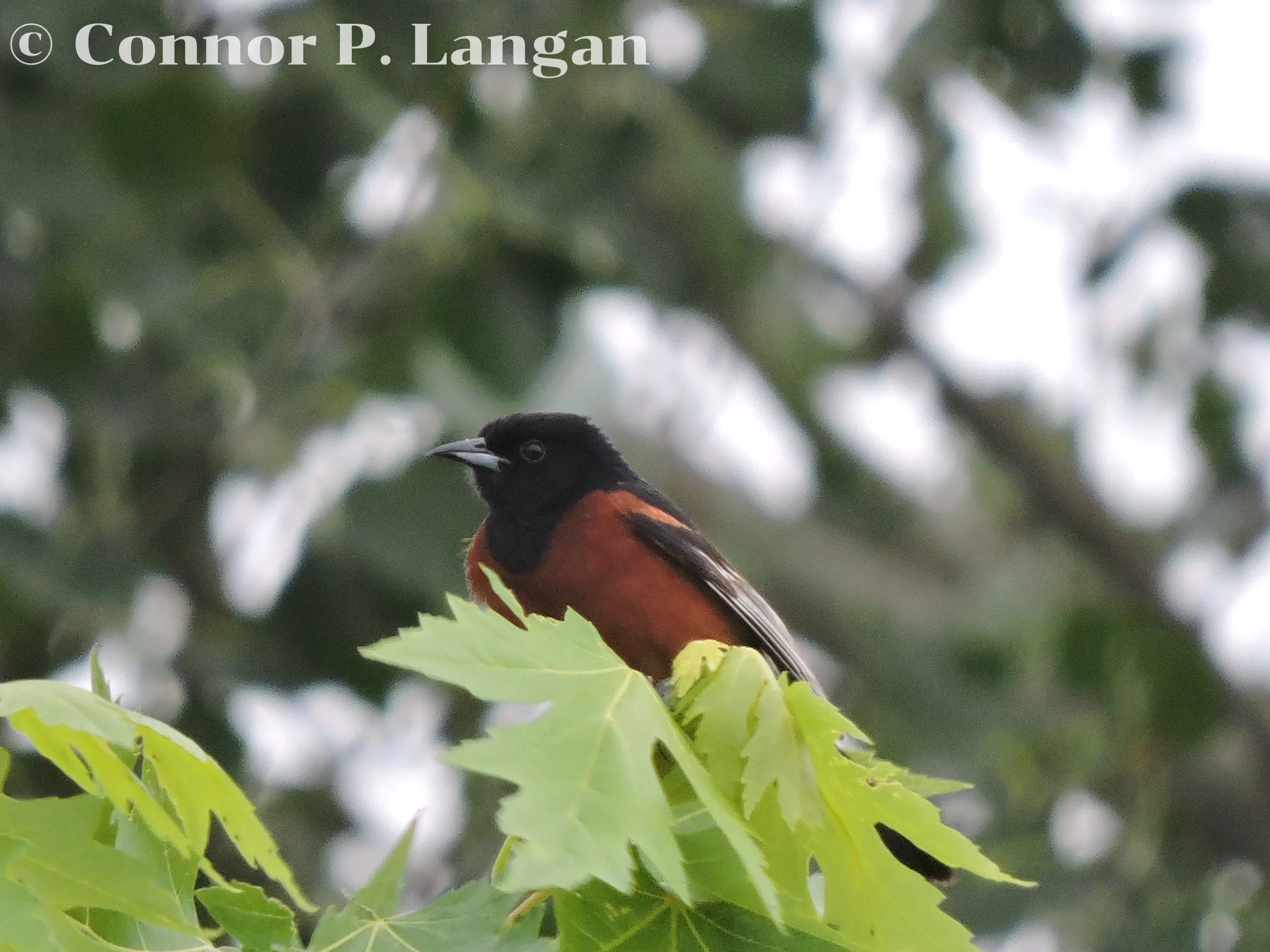Description
- Orchard Orioles are not nearly as chunky as some other oriole species. These birds have medium-length tails and long, fairly thin beaks.
- Orchard Orioles are on the small end of the oriole spectrum, measuring 5.9 to 7 inches long. These blackbirds weigh 0.6 to 1 ounce.
- Male Orchard Orioles have chestnut-colored undersides. Additionally, these birds have black heads, throats, backs, tails, and wings.
- Female Orchard Orioles are primarily a lime green color overall. In addition to their lime green color, females have gray wings.
- Immature male Orchard Orioles look similar to adult females, though they have black throats and black spectacles.
Behavior
- Orchard Orioles are a social, peaceful species of oriole. These birds are known to nest near one another without territorial disputes. In fact, Orchard Orioles may nest in close proximity to other bird species.
- In the nonbreeding season, these birds roost with fellow Orchard Orioles and other bird species.
Diet
- Like other oriole species, Orchard Orioles undergo notable dietary transitions throughout the year. In the breeding season, insects make up the bulk of an Orchard Oriole’s diet.
- Orchard Orioles transition to a diet centered around fruit and nectar in the nonbreeding season. Insects are largely cut out of the diets of these birds during this time.
Habitat
- Orchard Orioles thrive in open habitats with large, scattered trees. Therefore, parks, pastures, riparian corridors, and other open, wooded areas are ideal for these blackbirds.
- Watch for Orchard Orioles to appear in similar habitats during migration. Additionally, these birds can turn up in shelterbelts, woodlots, and cemeteries. In winter, Orchard Orioles may favor coffee and cocao plantations, open forests, and fields with scattered trees.
Range
- Orchard Orioles breed from central Mexico north to south-central Canada. These birds breed throughout the Great Plains to the East Coast.
- Orchard Orioles winter in Mexico, Central America, and northern South America.
Breeding
- This species of blackbird is socially monogamous, with birds finding new mates each year.
- The female takes charge of doing most of the nest building. Orchard Orioles nest in an assortment of tree species including both coniferous and deciduous species.
- It takes a female Orchard Oriole around 1 week to complete a nest. Orchard Orioles do not construct intricate hanging baskets nests as some other orioles do. However, Orchard Oriole nests are still well-constructed. Females create cup-shaped nests out of plant stems, grasses, and other plant fibers.
- Females produce 1 to 2 broods of eggs each year. Each clutch of eggs has 4 to 6 eggs, and eggs hatch in about 2 weeks. The nestlings leave the nest 2 weeks later.
Backyard Birding
- Orchard Orioles—like other oriole species—will visit backyards that offer some of their favorite foods. Backyard birders who put out grape jelly feeders and halved oranges have a great chance of attracting these birds during migration.
Population Status
- Orchard Orioles have lost almost half of their total population in the last half-century. There are currently about 12 million Orchard Orioles in existence.

